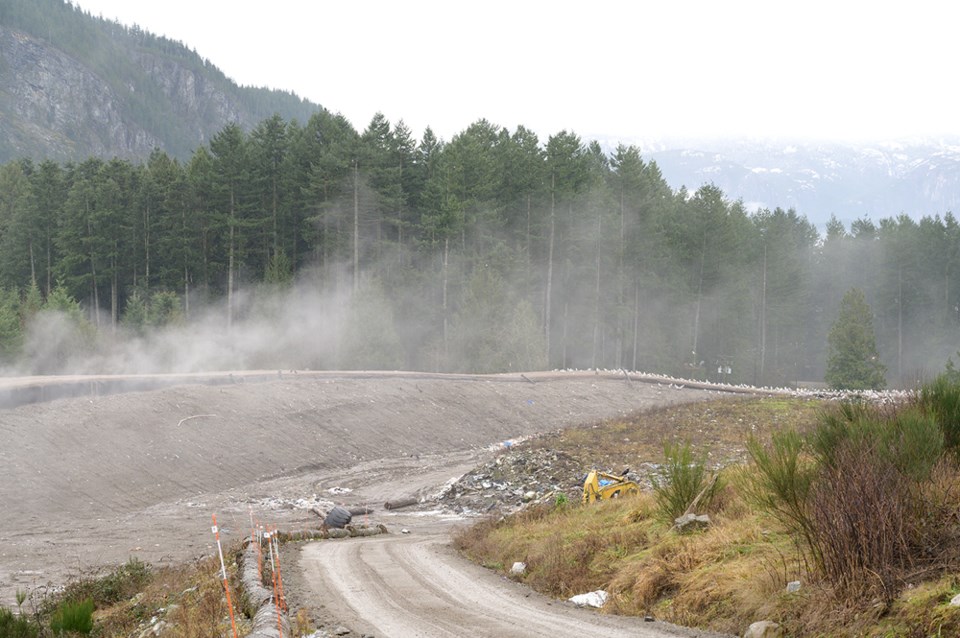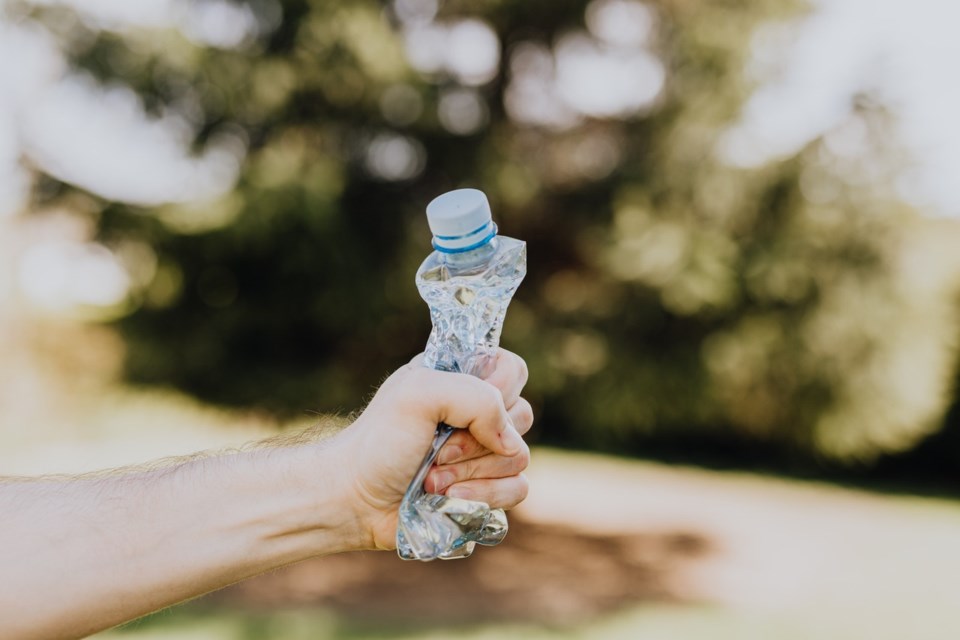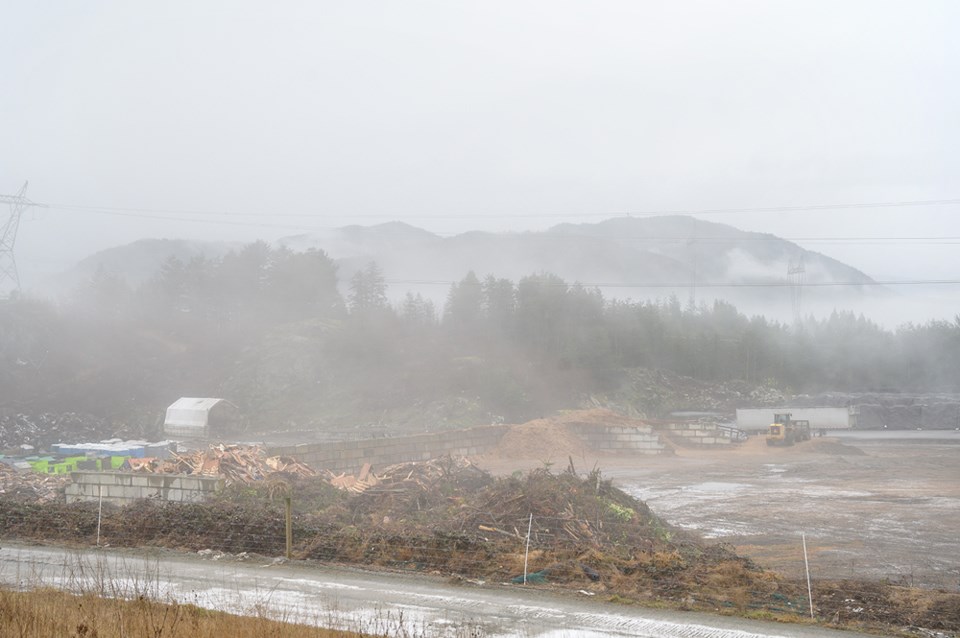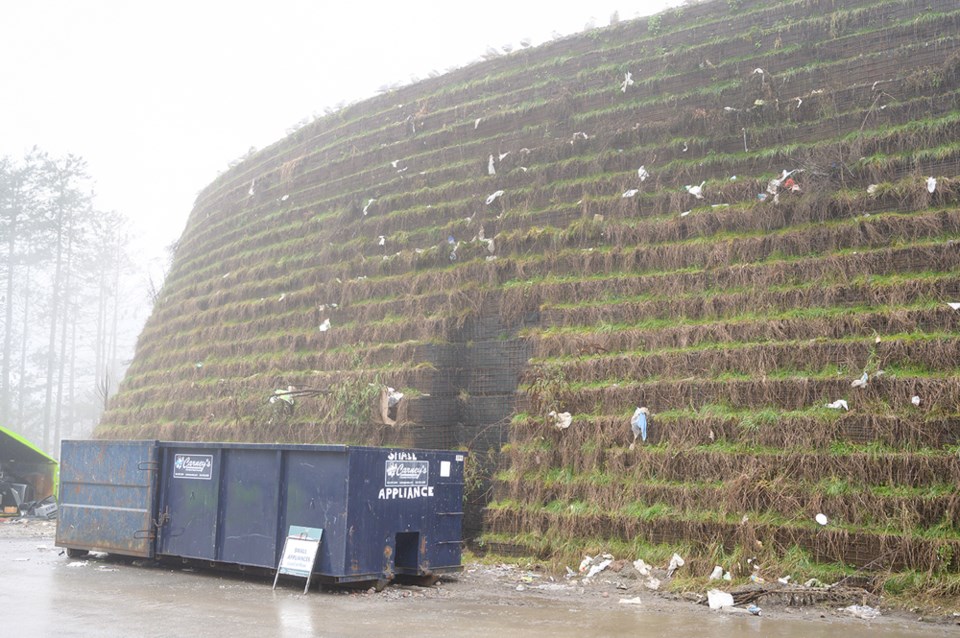Folks in Squamish are doing better with diverting organics from the landfill, but still throwing out too much trash, including plastic and paper products, according to a recent presentation to council.
Areport by District staff shows the overall amount of trash Squamish is throwing out is going down. We are at about 500 kilograms of waste per capita. This disposal rate is calculated by taking everything that is thrown into the landfill — from all sources in town — and dividing that weight by the community's population.
The provincial target is 350 kilograms per person.
The District's target is 300 kilograms by 2021.
"That is an ambitious target. I think it is going to take us a few more years to get us to that," said Nicole Steglich, the District's integrated solid waste specialist who led the Dec. 8 presentation. "We are still moving in the right direction and we have some big wins to come."
Squamish had a 64% diversion rate in 2019 and the District wants to be at 80%.
Steglich noted that when looking at the waste thrown out by each sector, the waste that is coming from businesses, industry, commercial and institutional properties makes up 47%. Residential garbage makes up 31%, while construction and demolition waste materials make up 12%.
The Squamish Landfill, located in the north end of Brackendale, has been expanded vertically; a project that was completed in 2019 at a cost of $6.4 million.
But District staff estimates space will run out between 2025 and 2027. Thus, on Oct. 13, council voted unanimously in favour of making an approval in principle for the lateral expansion of the landfill.
Results of a waste composition audit completed by consultants from Tetra Tech at the Landfill in August were also presented to council at its committee of the whole December meeting.
Wilbert Yang, with Tetra Tech, said the audit provides a "snapshot" of the items different sectors within the community dispose of at the landfill.
The audit collected a total of 30 samples at the dump for inspection.

Such an audit is conducted for the District every two years to see how much waste in town is being still sent to the landfill — as opposed to diverted to recycling or organics programs.
Over all sectors, organics found in the audit were at 30%, down from 47% in 2018. (In 2016, organics made up 35% of the audited trash at the landfill.)
"There has been a statistically significant drop in the proportion of organics in waste from single-family homes since 2016; from 40.1% (2016) to 34.6% (2018) to 24.3% (2020)," the Tetra Tech report reads.
"While the percentage of organics in multi-family homes and [industrial, institutional, and commercial] waste has dropped since 2018, statistical analysis indicates the drop was not significant."
Another success was in diverting household hygiene products, which are down to 7% this audit as opposed to 14% and 17% in the last two audits.
Paper products, though, were up this time around.
The auditors found 21% paper products in August, as opposed to 13% in the last two audits.
Plastics were up too. This time 18% of the products found in the trash were plastic as opposed to 10% and 13% in the last two audits.
One reason may be that COVID-19 precautions increased the use of items made of these materials, presenters noted.
Another rise was in the 'other' category. Other includes glass, metal, fines, textiles, bulky objects, household hazardous waste, electronics and building materials. The recent audit showed these materials made up 25%of items found in the landfill as opposed to 17% last time and 22% in the first audit.
For the construction industry, wood waste was a significant proportion of the waste found in the audit, Yang said.
New this year, the audit included streetscape garbage, which makes up a very small total of the waste stream, but shows what people are throwing in public garbage cans on local streets.
Household hygiene, which includes pet waste, was found there, but also some organics and paper and plastics.
"Overall, in terms of what is being disposed of in the district, a big chunk of it is still organics (30%), recognizing that the last time we had this it was significantly more organics in the waste stream. And the next largest components are paper and plastics," Yang said.
He added that there is a diversion potential, given the resources available, of 70% which could still be diverted away from the landfill.
"It could be the organics waste stream, which is still about almost a third of the waste stream, and that can go into your curbside compostable — organics — program. There's still a fair amount of recyclables and there are materials that could be dropped off at the landfill at the drop-off depot as well as wood materials that could be used as a fuel."

Single-use items make up between 3.3% and 10% of the waste stream depending on the sector, the Tetra Tech report showed.
District staff noted that the pandemic has interrupted enforcement of the single-use bylaw.
"Through March and April, there was some uncertainty around the hygiene of reusables. Many retailers actually banned people bringing in reusable bags. Since that point, we have seen voluntary compliance start with the larger grocery chains throughout the District, and we are looking at approaches to start with the education and outreach of that in the new year," said Jeff Wint, the waste reduction and sustainability co-ordinator who was hired at the District in September.
About 10% of the street-collected trash was single-use items, Yang said.
"The main categories of single-use items that we found were take-out containers — both paper and plastic; we also found a lot of single-use cups," he said.
In 2021, resources from the District will be directed toward education and enforcement of the Solid Waste Bylaw; planning and outreach, and predesign for infrastructure that is going to provide more opportunities to take materials to be properly managed, Steglich told council.
We are looking at approximately $110,000 to invest in solid waste diversion," she said, noting $85,000 would go toward pre-design of a new recycling depot as well as an expansion of the transfer station and recycling depot there.
Wint said that for 2021, said that this winter and spring, in partnership with GFL, further curbside audits will be done.
"We are also working with property management companies and stratas to identify those multifamily properties that are not yet in compliance with the Solid Waste Bylaw," he told council. "Or move forward with enforcement on that."
About 167 counter-top organics totes have been distributed and another 770 will be handed out to help multi-family properties that aren't in compliance, he said.
Regarding wood waste, Wint and a bylaw officer are visiting construction sites to educate and that is already seeing positive results, he said.
The next landfill audit is in 2022.
Local ‘trash guru’ Bill Cavanagh thinks the District isn’t going far enough in reducing what ends up in the landfill.
He would like to see it stick more closely to the Zero Waste Strategy.
Cavanagh spent most of his career as a consultant and personally spearheaded a waste diversion project for his former complex at Aqua at the Coastal Village in Squamish. With his system of sorting in the building, the lion’s share of waste previously heading to the landfill was diverted.
“The estimate when we started this project was only 35% of the bulk garbage was actually being diverted. In 2019 that figure increased to 87%,” he told The Chief.
“What this means in today’s terms is that Aqua achieved the District’s target of 300kg, by 2021 in 2019.”
Cavanagh says all of Squamish could achieve this, with the right leadership and effort.
Regarding adhering to the Zero Waste Strategy, the District says elements of the District’s Zero Waste Strategy have been integrated into more recent municipal plans, including the Official Community Plan (OCP), Council’s 2019 to 2022 Strategic Plan, and the Community Climate Action Plan.
Priorities are on education and enforcement of the Solid Waste Bylaw, which requires residents and business to separate organics and recyclables; ensuring diversion programs and services are available; instituting guidelines for construction and demolition waste diversion, and promoting waste minimization, District staff told The Chief.
Cavanagh takes issue with the Tetra Tech audit because he says the sample size was way too small to get a good idea of the real situation.
"The audit they did was not deep enough," he said. "They needed to make arrangements with GFL to do a separate pick up on one big street, take it to the landfill, drop it... and then do the audit. Then they would find out just how much contamination is in every bin."
He thinks the contamination is about 30% per bin, which ends up at the landfill.
*Overall, he said, looking at the Tetra Tech report, it shows not a great improvement over 2016 in terms of trash in the district.
"As long as there are no consequences for bad behaviour, this will never change."
He would like to see a group of inspectors go around periodically and check on all local participants, including the large grocery stores, and he’d like to see financial penalties issued against all who do not comply.
Cavanagh also says many multifamily complexes aren’t sorting or composting and don’t have the facilities to do so.
District staff say that the Solid Waste Bylaw requires that all multiple-unit residential properties, and industrial, commercial, and institutional properties have collection containers for residual waste, recyclable and organic materials that are generated at the premises.
“The OCP contains universal guidelines for developments to have facilities dedicated to solid waste that have adequate space. For buildings constructed prior to these guidelines, owners/strata managers must adopt some creative thinking and solutions, as well as set ambitious goals for themselves to meet the Solid Waste Bylaw and Wildlife Attractant Bylaw,” said the District’s communications manager Christina Moore in an email to The Chief.
The District’s outreach sustainability co-ordinator Jeff Wint and GFL are resources to support buildings in their transition. Buildings can contact [email protected] if they require support.
Ultimately, Cavanagh says that it would be cheaper to truck the trash that remains out of the area, as other municipalities do, as opposed to continually expand the landfill.
The District says, as per a Report to Council on Oct. 13, “keeping our residual waste in Squamish benefits the local economy and the economic resiliency of the District. It also provides transparency and accountability to pursue our Zero Waste goal.
“The most affordable option for future is to expand the Squamish Landfill, and extend the lifespan for as long as possible through effective waste diversion.”




